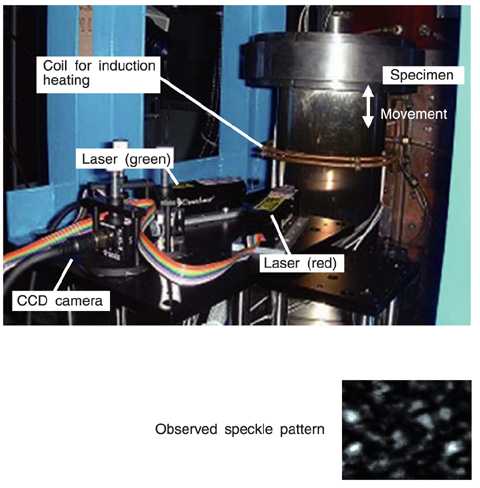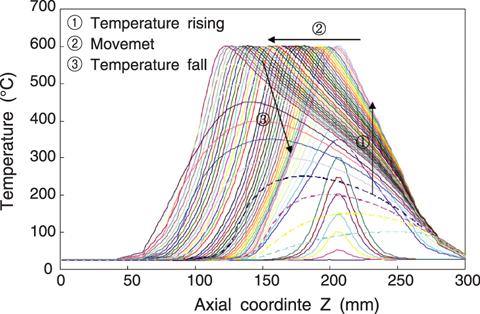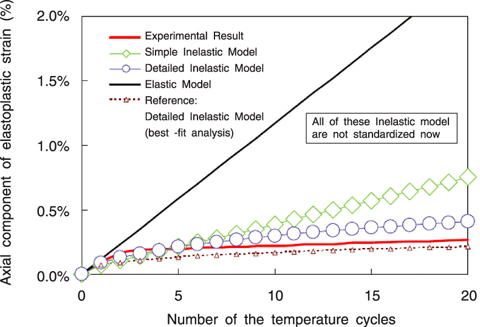
Fig.1-5 Laser speckle system and its measurement of a specimen

Fig.1-6 Time history of temperature distribution along the axis of the specimen

Fig.1-7 Comparison of the strain found in experiments and analyses (Z=150mm in Fig.1-6)
A main vessel in the FBR is subjected to a severe cyclic thermal load due to cyclic movement of longitudinal temperature distribution with a large gradient. This is generated by the combination of heating of the lower part by hot liquid sodium and cooling of upper part by ambient gas during start-up and shut down of the system. As a result, inelastic strain accumulates near the sodium liquid surface. Since excessive inelastic strain breaks down the structural integrity, precise prediction of this strain is important for structural design of the reactor vessels. To understand the actual behavior of the inelastic strain and so evaluate an inelastic strain analysis, tests of the strain on a reactor vessel model were carried out.
Fig.1-5 shows the tested cylindrical specimen (material: 316FR steel, height: 300mm, outer diameter: 55mm, thickness 3.5mm). This specimen was given the temperature distribution shown in Fig.1-6, which imitates an actual reactor vessel. In this experiment, the following factors were measured: (1) temperature, (2) radial deformation, and (3) axial strain. In the past it has been difficult to measure local strain on a high temperature structure with high precision. For the measurement of this strain, we developed a non-contact measurement system based on the laser speckle method. This system measured the speckle pattern (Fig.1-5 lower right) of diffuse reflection of a laser. Through the image processing of the change of this pattern, the strain on the structure surface can be estimated.
The experiments showed that movements of the longitudinal temperature gradient caused axial strain, especially in the early stage. With succeeding repetitions of the temperature movement, less incremental axial strain is caused. As shown in Fig.1-7, upon 3 or more cycles of the temperature movement, the traditional elastic analysis overestimates the axial strain. Although the elastic analysis is on the safe side, the strain prediction should be based on inelastic analysis to rationalize the reactor vessel design.
The strain measured here is important and useful for improvement of inelastic analysis needed to make the structural model. In the future, using this data we will develop a more detailed model to explain actual behavior such as temperature dependency, non-linear hardening, and cyclic hardening. This model will improve the prediction of the inelastic strain, and enable design of compact reactor vessels.